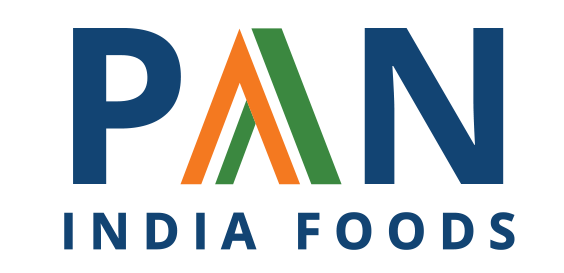Rice is a staple food for billions worldwide, playing a crucial role in global food security. Understanding the journey of rice from farm to plate reveals the intricate processes involved in its cultivation, harvesting, processing, and distribution. Pan India Foods ensures that this journey is sustainable and efficient, maintaining high-quality standards.
Rice has been cultivated for thousands of years, originating in Asia and gradually spreading across the world. Today, it is grown in over 100 countries, with China, India, Indonesia, and Bangladesh being the largest producers. Rice is a fundamental part of various cuisines and traditions, making it one of the most culturally significant crops globally.
Cultivation: The Foundation of Rice Production
Rice farming begins with careful planning and sustainable agricultural practices. Key steps include:
- Soil Preparation – Farmers prepare fields by plowing and leveling the soil to ensure uniform water distribution. Proper soil fertility is crucial, and farmers often use organic compost and fertilizers to maintain soil health.
- Seed Selection and Sowing – High-yield and climate-resistant rice varieties are chosen to enhance productivity. Traditional farmers may rely on heirloom seeds passed down through generations, while modern agriculture utilizes scientifically developed hybrid varieties.
- Irrigation Management – Techniques such as the System of Rice Intensification (SRI) and Alternate Wetting and Drying (AWD) optimize water usage. In flood-prone areas, farmers adopt deepwater rice varieties, while dryland farming techniques are used in regions with limited water resources.
- Pest and Weed Control – Integrated Pest Management (IPM) minimizes pesticide use while protecting crops. Farmers employ methods such as companion planting and biological pest control to maintain a balanced ecosystem.
Harvesting: Bringing in the Grains
After months of growth, rice plants reach maturity, signaling the harvest period. Farmers:
- Monitor Crop Readiness – Checking for optimal grain moisture levels, typically around 20-25% before harvesting.
- Use Traditional and Modern Harvesting Methods – Hand harvesting is still practiced in small-scale farming, while large commercial farms use mechanized combines to increase efficiency.
- Dry the Rice Properly – Reducing moisture content to prevent spoilage and enhance storage quality. Sun drying is common in many rural areas, while industrial dryers are used in large-scale production.
Processing: Turning Paddy into Edible Rice
Once harvested, rice undergoes multiple processing stages:
- Hulling – Removing the outer husk to obtain brown rice. Brown rice retains the bran layer, which is rich in fiber and nutrients.
- Polishing and Milling – Refining the grain to produce white rice. Some varieties, such as parboiled rice, undergo steaming before milling to retain more nutrients.
- Sorting and Grading – Ensuring consistency in size, texture, and quality. Advanced sorting machines use optical scanners to remove broken or defective grains.
- Packaging – Using eco-friendly materials to maintain freshness and sustainability. Vacuum-sealed packaging extends shelf life, while biodegradable packaging reduces environmental impact.
Distribution: From Mill to Market
Pan India Foods ensures an efficient supply chain through:
- Ethical and Sustainable Sourcing – Supporting local farmers with fair trade practices, ensuring they receive fair compensation for their crops.
- Advanced Logistics – Using smart storage and transportation systems to maintain quality. Temperature-controlled warehouses prevent spoilage, while modern supply chain tracking ensures traceability from farm to consumer.
- Global Reach – Supplying premium rice varieties to consumers worldwide. Export regulations and quality certifications, such as ISO and organic labels, ensure adherence to international standards.
Cooking and Enjoyment: The Final Step
After reaching households, rice is prepared in diverse ways across cultures. Whether steamed, stir-fried, or incorporated into culinary delicacies, rice remains a versatile and essential part of meals globally. Some popular rice dishes include:
- Biryani (India/Pakistan) – A fragrant rice dish cooked with spices, meat, and saffron.
- Paella (Spain) – A flavorful dish made with rice, seafood, and vegetables.
- Sushi (Japan) – Vinegared rice combined with seafood, vegetables, or egg.
- Jollof Rice (West Africa) – A spicy tomato-based rice dish enjoyed in Nigeria, Ghana, and beyond.
- Risotto (Italy) – Creamy rice cooked slowly with broth, cheese, and various ingredients.
Rice also plays a central role in cultural and religious ceremonies. In many Asian and African traditions, rice is offered in rituals and celebrations, symbolizing prosperity and abundance.
The Role of Technology in Rice Production
Modern advancements have significantly improved rice farming efficiency and sustainability:
- Precision Agriculture – The use of drones, sensors, and GPS technology allows farmers to monitor crop health, soil moisture, and nutrient levels with precision.
- Climate-Resilient Rice Varieties – Scientists are developing drought-tolerant and flood-resistant rice strains to mitigate climate change impacts.
- Automated Rice Mills – State-of-the-art machinery enhances efficiency, reducing wastage and improving grain quality.
- Blockchain for Supply Chain Transparency – Blockchain technology ensures traceability, reducing fraud and improving food safety.
The Future of Sustainable Rice Production
As climate change continues to challenge global agriculture, sustainability in rice farming is more crucial than ever. Pan India Foods is committed to:
- Reducing Carbon Footprint – By adopting renewable energy sources in milling and processing facilities.
- Supporting Small-Scale Farmers – Providing training and resources for sustainable agricultural practices.
- Promoting Organic Rice – Encouraging consumers to opt for organically grown rice that reduces chemical dependency.
- Enhancing Water Conservation – Expanding the use of water-efficient irrigation techniques to protect natural resources.
Conclusion
The journey of rice from farm to plate involves a series of well-coordinated steps that impact quality, sustainability, and food security. From ancient fields to modern processing plants, rice continues to be a crucial component of diets worldwide. Pan India Foods remains dedicated to environmentally friendly practices and ethical sourcing, ensuring that every grain on your plate is produced with care and responsibility. As innovation and sustainability practices evolve, the rice industry will continue to feed future generations while preserving the planet.

